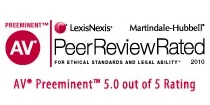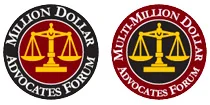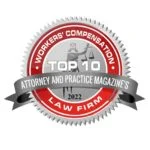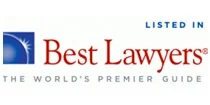
North Carolina Court of Appeals Issues Decision that a Townhome Owners Association Could Not Pursue Construction Defect Claims
A recent decision from the North Carolina Court of Appeals, Shearon Farms Townhome Owners Association II, Inc. v. Shearon Farms Development, LLC, addresses who has the authority to bring construction defect claims, the homeowners association or the individual townhome owners. The case arose when a townhome owners association in North Carolina filed suit against the window manufacturer Jeld-Wen, Inc. and other defendants after townhome owners complained the siding on their homes was warping and distorting from defective windows reflecting sunlight onto the siding. None of the individual townhome owners were plaintiffs, and the association was the only plaintiff in the suit. Jeld-Wen succeeded in having the lawsuit dismissed on the basis that the association did not have standing to bring the claims, and the North Carolina Court of Appeals upheld the dismissal.
Standing is a legal term meaning that someone has a legal interest that allows them to pursue a claim. For example, if someone has no legal interest in a piece of property, the person does not have standing to bring a legal claim related to that piece of property.
As is the standard scheme for townhome, the townhomes at issue were entirely owned by the individual townhome owners with the property line between each owner passing through the party wall between their two units. Unlike condominiums where the homeowners association actually owns parts of the buildings like the roofs, exterior walls, stairwells, and hallways, in townhomes the individual owners typically own their portion of the building and the association does not own any of the buildings.
However, most townhome developments have covenants (the “CCRs” as they are often called) that provide that the association is responsible for maintaining the exteriors of the building. In the Shearon Farms case, the covenants were a bit unusual because they stated the association was to “provide exterior maintenance” including “paint, repair, replace and care for all roofs . . . [and] exterior building surfaces.” While that language could easily lead one to conclude that the association was responsible for repairing construction defects on the exterior of the townhomes, the covenants went on to provide that the association’s maintenance and repair responsibilities extend only to “normal usage and weathering.”
Jeld-Wen argued that because the townhomes were owned by the individual owners, not the association, and because the covenants did not require the association to repair the exterior for construction defect damages, the association did not have standing to pursue the claims. The association first tried to overcome Jeld-Wen’s arguments through associational standing. Associational standing is a legal doctrine through which an association can bring a lawsuit on behalf of its members, but associational standing is generally limited to where an association seeks declaratory or injunctive relief for its members and does not apply where the association seeks money damages. The North Carolina Court of Appeals found the townhome owner association did not have associational standing because the suit was for money damages and even were that not a bar to associational standing, the damages sought by the association may vary among different townhomes rather than being one common, identical damage suffered by each townhome thereby making associational standing even less appropriate.
The association then argued that it had standing because the covenants “contractually obligated [it] to repair the damage allegedly caused by Jeld-Wen’s windows.” The North Carolina Court of Appeals rejected that argument by reviewing the language of the covenants and concluding the covenants do not obligate the association to repair the issue and rather the unit owners were responsible for the issue. The Court reasoned that because the damage to the buildings’ exteriors was not the result of normal usage and weathering, the association had no obligation to repair the damage and therefore did not have standing to pursue claims related to the damage.
Finally, the association had several townhome owners assign their claims against Jeld-Wen to the association after it filed the lawsuit. The North Carolina Court of Appeals held those assignments were insufficient to create standing because they were made after the association filed suit and therefore had no impact on the issue of whether the association had standing at the time it filed suit. While a curious ruling because the assignments would seem to create standing, the ruling may mean that the association could refile the suit and have standing (at least for the claims of those owners who assigned their claims to the association) but those claims potentially would be subject to the statutes of limitations and statutes of repose rather than having those statutes tolled by the filing of the association’s original, now dismissed lawsuit.
There are two other curious elements to the Shearon Farms decision which likely will limit the decision to the facts of the case rather than allowing the decision to create a barrier for townhome owners associations and townhome owners faced with the need to pursue claims against builder for construction defects. First, a common practice when pursuing legal claims for construction defects in condominiums or townhomes is to name both the association and unit owners as plaintiffs. Typically, the townhome owners are made plaintiffs by having one or a few owners serve as a named plaintiffs and have them assert claims on behalf of all of the other owners through a class action. For whatever reason, the townhome owners were not made plaintiffs in the Shearon Farms suit, and the outcome likely would have been different had they been plaintiffs.
Second, the covenants at issue in the Shearon Farms case had unusual language regarding the association’s maintenance and repair responsibilities. More common is for townhome covenants to state that the association is obligated to maintain and repair the “exteriors” or “exterior surface of the buildings.” While that language is less restrictive, it is still rather vague and could lead to the same types of arguments before the North Carolina court in Shearon Farms as to whether the association or the townhome owners are responsible for construction defects. If an association brings suit because window flashing was installed improperly and is causing water intrusion, a common construction defect, a dispute may arise as to whether that window flashing is part of the “exterior” or “exterior surface” that the association is responsible for or is a component the townhome owner is responsible for.
To make matters even more complicated, covenants typically exclude “windows” or “glazing,” which arguably could mean the actual glass in a window or the entire window assembly, from the association’s maintenance and repair responsibilities. Using the improper window flashing example, a second argument may arise as to whether that flashing is part of the “window” or “glazing” and therefore an owner responsibility rather than an association responsibility.
To add one final layer of complexity, the most common and most destructive construction defect we see in South Carolina is water intrusion. In condominiums or townhomes, water intrusion starts at the exterior, which is typically part of the association’s maintenance and repair responsibilities, but then continues on into the wall framing and then into the interiors to cause damage to drywall, hardwood floors, ceilings, window trim, and other interior components. Damage on the exterior may clearly be the association’s responsibility with the association having standing to sue the builder for those damages, but an argument may arise as to whether the association can sue to recover for wall framing and interior damages.
The Shearon Farms decision does not appear to represent a change in the law related to the ability of multifamily communities to pursue claims for construction defects. Instead, it appears to be a fairly straightforward application of existing law on community associations arising from unusual facts. The decision does highlight the need to anticipate that defendants will carefully review a community’s covenants to develop arguments that the parties who can bring the claims are not plaintiffs in the suit. To avoid and overcome those arguments, communities pursuing construction defect claims should sure that all parties arguably necessary to pursue a claim are named as plaintiffs in the case.




















